
Here at Tuxedo Yard Care, we have made it our business to ensure that every garden and flower bed in northern Utah is bright and beautiful, which is why we are here to tell you all about coneflowers! With their bright, vibrant petals and unique shape, coneflowers are an excellent addition to any garden. Our team of gardening specialists put this post together to tell you all about the benefits of coneflowers in your garden, with a special focus on the popular purple coneflower! Let’s dig in and take a closer look at what coneflowers are and why you should plant them!
What Are Coneflowers?
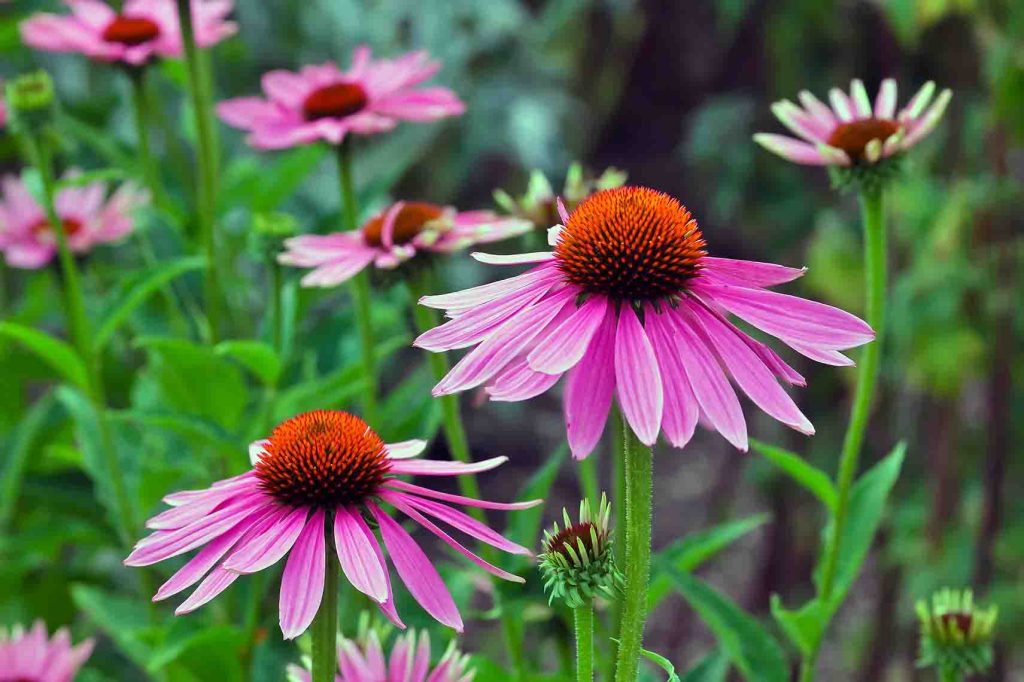
Coneflowers are perennial, herbaceous flowering plants that belong to the Asteraceae family, also known as the daisy or sunflower family. As such, coneflowers are notable for their large and colorful blooms of ray-like petals, making them a wonderful addition to any Utah flower bed. The species most widely used by gardeners is called Echinacea purpurea, also known as the purple coneflower. Though their blooms are often purple in the wild, they can come in a variety of colors, including white, pink, and red, with finger-like flower petals that often face downward. Coneflowers of any variety or species are also recognizable for their large, cone-shaped center of seeds, known as a “disk.” They’re a great low-maintenance option for gardeners. Coneflowers are especially popular in northern Utah because of their hardiness and long-blooming season, lasting from late spring to early fall.
Key Characteristics:
- Colorful perennials
- Long, ray-like petals
- Slightly downward or drooping petals
- Large “disk” of seeds in center
- Long-lasting blooms
- Perfect for sunny spots
Types Of Coneflowers
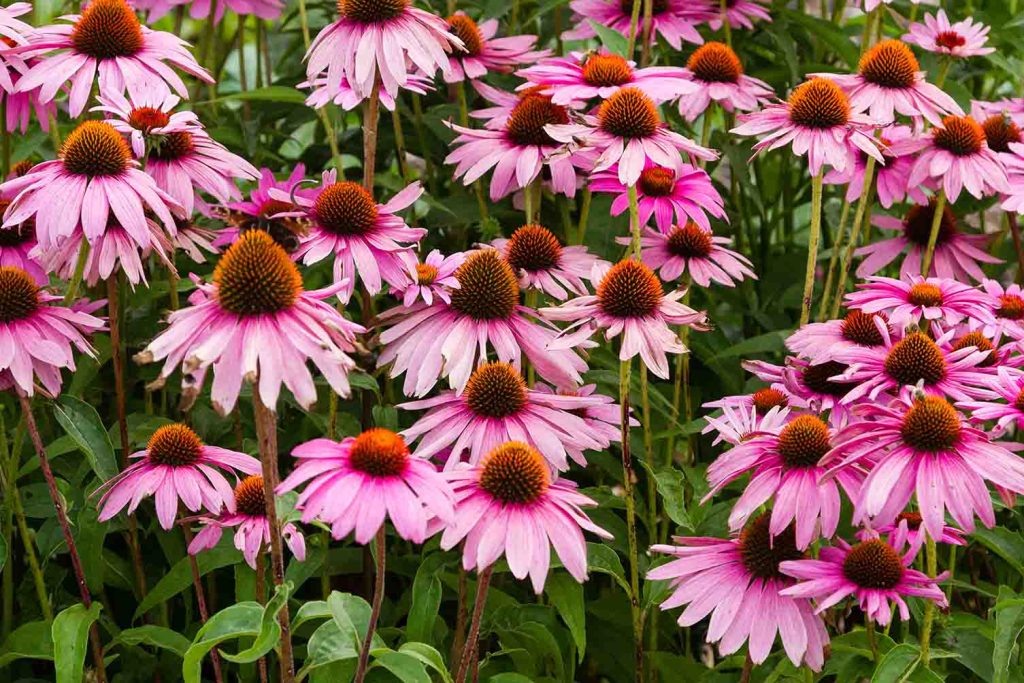
VS.
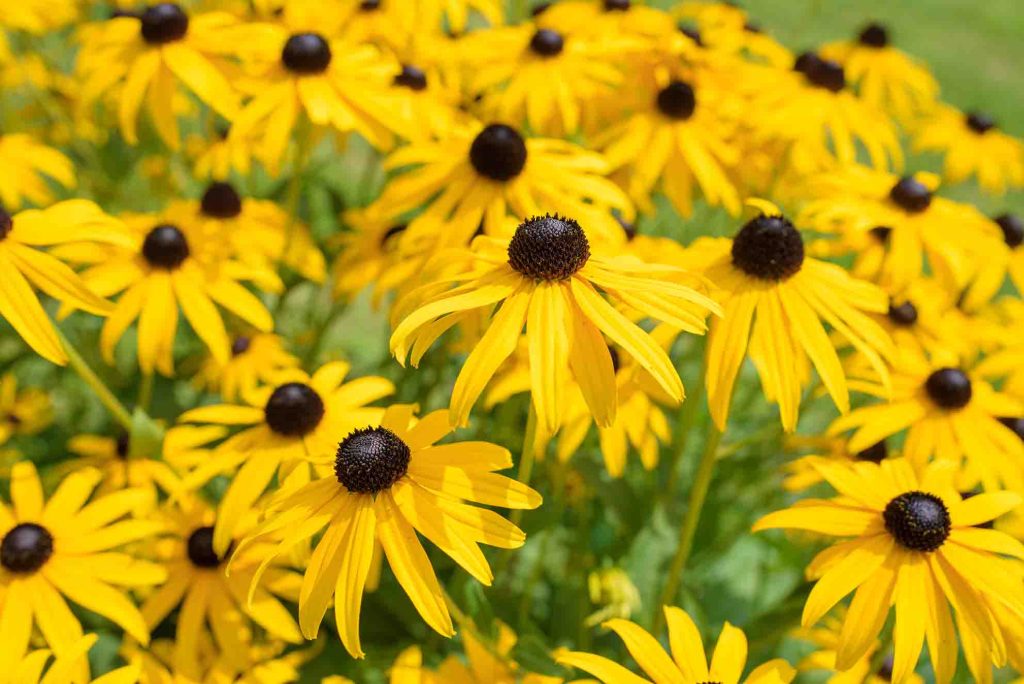
As stated above, Echinacea purpurea is the species of coneflower cultivated for residential yards and gardens, but there are several types of flowers that could be considered coneflower. Any flower with this cone shape of disks and drooping petals is often referred to colloquially as a coneflower. For example, the black-eyed Susan (pictured above, to the right) looks identical to a yellow coneflower, and it is often referred to as such. This flower belongs to the Rudbeckia genus, which was once believed to be the genus of all coneflowers. However, true coneflowers belong to the Echinacea genus and share similar traits.
Within the Echinacea genus, there are believed to be up to 10 different types of true coneflowers. They all typically grow between 2 to 4 feet tall in the wild, have slender stems with alternating leaves, are perennials, and have deep taproots (except for Echinacea purpurea). Most importantly, all these flowers open up their blooms to reveal the “cone” (seed disk) sitting atop the stem of the plant. The following are the common names for the various types of coneflowers within the Echinacea genus:
- Purple coneflower
- Pale purple coneflower
- Yellow coneflower
- Sanguine purple coneflower
- Narrow-leaf coneflower
- Smooth coneflower
- Narrow-leaved purple coneflower
- Wavyleaf purple coneflower
- Topeka purple coneflower
- Tennessee coneflower
Where & When Do Coneflowers Grow?
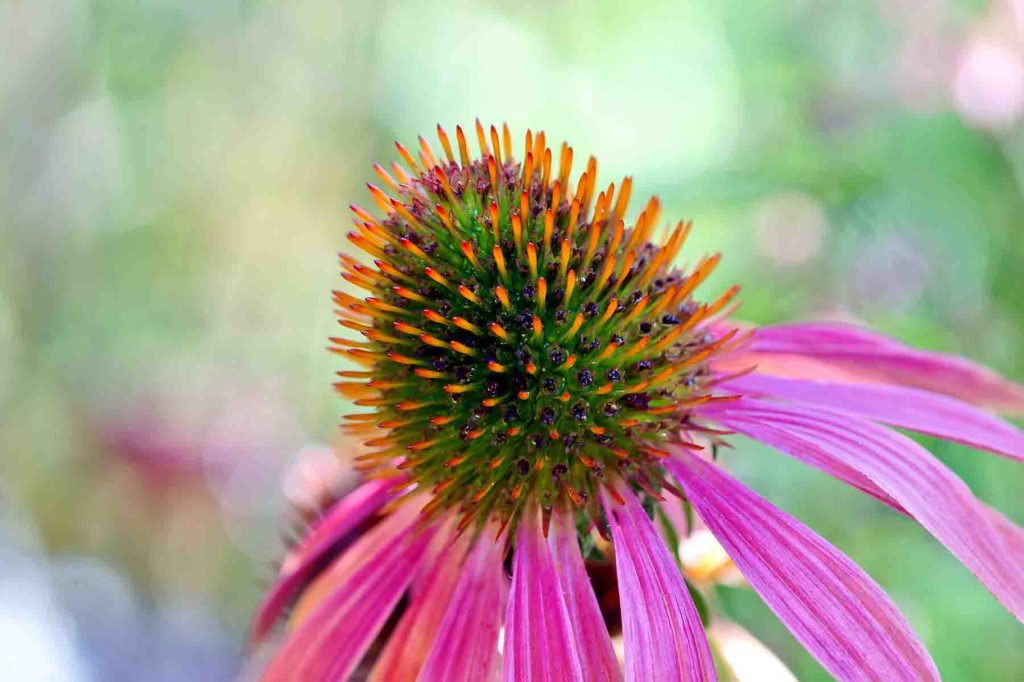
Coneflowers are native to North America and mainly grow in prairie-like grasslands, meadows, or even forests. They can be found in many states throughout the US, but they are native to states and areas east of the Rocky Mountains, including areas in Mexico and Canada. Coneflowers prefer full sun, with some afternoon shade, and well-draining soil that is slightly acidic across all USDA Plant Hardiness Zones 3 through 9, but they thrive best in Zones 5 through 8.
Various species of coneflowers will bloom anywhere from late spring to early fall, with the purple coneflower typically boasting its showy flowers between June and August. For gardeners, you can expect to see these flowers returning in your yard for several years, and they are commonly spread by birds and other animals eating or otherwise dispersing the seeds in the cone. Coneflowers also self-seed and germinate, meaning they can easily pop up in many different areas as soon as the weather is warm enough for germination.
Why You Should Plant Coneflowers
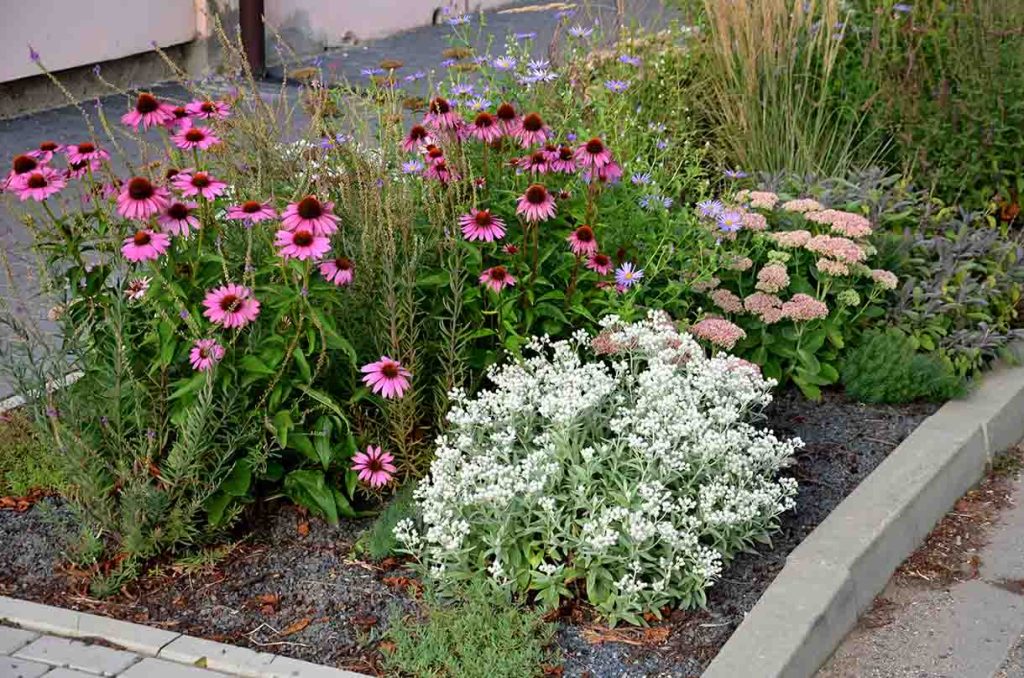
In addition to being an eye-catching addition to any garden or flower bed, coneflowers attract many types of pollinators, including bees, butterflies, and birds. Coneflowers are also incredibly easy to care for, as they require minimal attention and maintenance. They are a great option for gardeners because they don’t require much water or fertilizer, but they will still offer beautiful blooms in return! With just a bit of deadheading (removing spent blooms) and light pruning in the fall (to prepare for winter dormancy), you can keep your coneflower beds looking great year after year.
Perhaps the best thing about coneflowers in a flower bed or small garden is the fact that these flowers are not aggressive or invasive in any way. Most coneflowers produce healthy taproots that do not have fibrous offshoots or rhizomes, making them ideal for tight spots within the soil. The purple coneflower, however, has developed a root system of rhizomes and fibrous runners under the soil. Though this system differs from the normal root system of coneflowers, the roots of the purple coneflower are also non-invasive or aggressive, and they actually help to improve soil quality!
How To Plant Coneflowers

Coneflowers love full sun and moist soil, but make sure not to overwater them. As perennials, they should live through winter without issue if properly mulched and pruned in fall. As northern Utah’s premier gardening and yard care specialist, Tuxedo Yard Care has all the knowledge and experience needed to plant coneflowers in your yard, without you having to worry about any harm being done to your other flowers and plants. We hope you will give us a call this spring to get these gorgeous flowers on your property as soon as possible! Until then, follow these steps and keep these in mind if you decide to plant coneflowers in your garden or flower bed:
- Start coneflowers in indoor pots, roughly 8 to 10 weeks before transferring.
- After transferring outdoors, loosen the top 12 inches of soil.
- Space each coneflower 1 to 3 feet apart to allow for bunch growth.
- Mix the soil with up to 2 inches of organic compost.
- Water each plant deeply after initial planting in the garden.
- Do not overwater or overfertilize this beautiful, low-maintenance flower once it starts growing!



